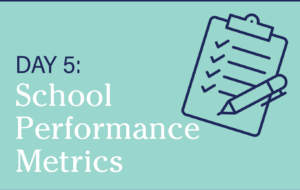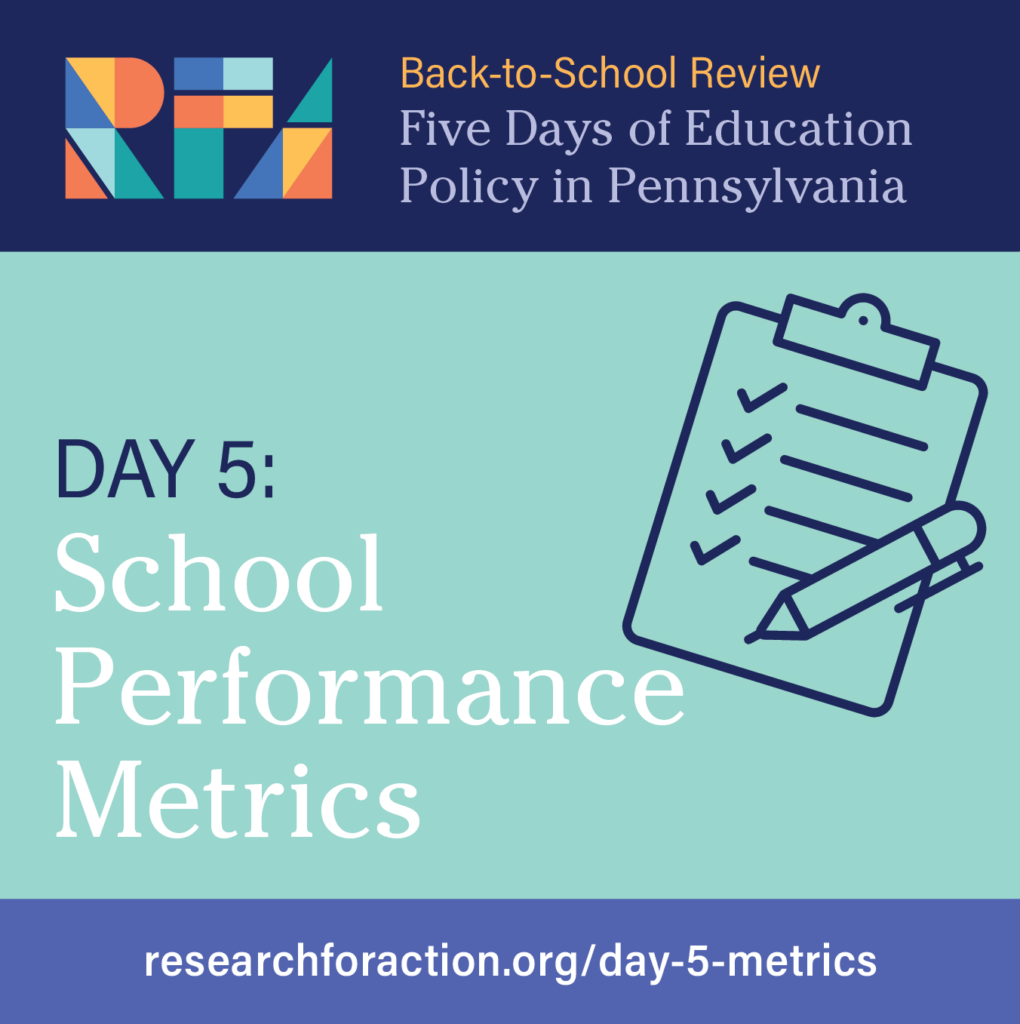Each day of this back-to-school week, RFA’s David Lapp highlighted issues in Pennsylvania education policy that he’ll be following closely in the coming year. Click below to read each day:
- Day 1 – School Facilities
- Day 2 – Accurate Teaching About Racism
- Day 3 – Teacher Workforce
- Day 4 – Fair School Funding
- Day 5 – School Performance Metrics
Day 5. – School performance metrics

One issue expected to confound policymakers, school leaders, researchers, and the public alike in the coming years, is how to measure school performance after years of potentially invalid data due to pandemic-related disruptions. Pennsylvania has multiple metrics intended to measure school performance, including the most recent dashboard, the Future Ready PA Index, and it’s predecessor, the School Performance Profiles which is still used as part of the state’s educator effectiveness system. Many individual districts and charter schools use their own measures. For example, the School District of Philadelphia publishes School Progress Reports and Annual Charter School Evaluations.
One thing all these metrics have in common is heavy reliance on state standardized tests –– the PSSAs and the Keystone Exams––including both raw proficiency rates and PVAAS, a metric of academic growth. But tests were canceled for the 2019-20 year and delayed in 2020-21 for many districts, causing serious concerns about the misuse of invalid data.
This may provide an opportunity for policymakers to consider alternate measures of school performance, focused on inputs that measure the richness of educational experiences that schools provide to students (quality teachers and staff, rich and challenging curriculum, extra-curricular offerings, small classes, and adequate facilities), the quality of school climate (use of trauma-informed approaches and limited police involvement and reduced exclusionary discipline), and the extent to which schools reduce segregation and equitably serve students with the greatest needs. RFA’s Equity-Focused Charter School Authorizing Toolkit provides examples of how to hold schools accountable for serving students experiencing homelessness (which PA schools often under identify), students in foster care or returning from the juvenile justice system, English learners, students with disabilities, and students in poverty.
This is also a time for policymakers to remember that metrics to measure “school” performance are often not the sum of their parts because results are driven by out of school factors. This is why housing policy, health care policy, employment policy, environmental policy and more, are all education policy. To paraphrase Jean Anyon in Radical Possibilities, the impact of reforms that improve out-of-school circumstances “can make a mockery” of (still important) school improvement.
